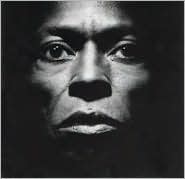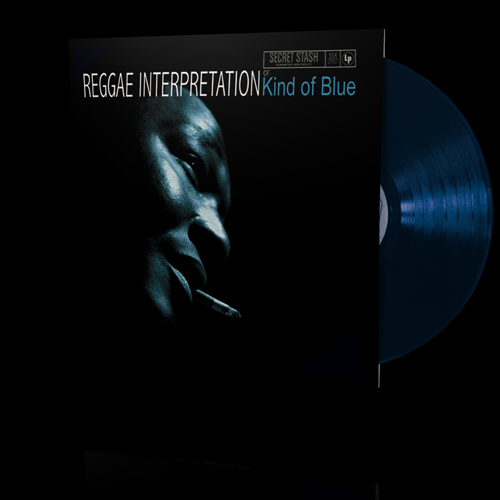
So we went on thursday to Paris, let me share my impressions with you :
*(this may contain spoilers for those of you who will visit it in the future)*
general oberservations :
- negative : a) no english catalogue available, it MIGHT become available SOMEWHERE in November, not able to order by internet;
b) the poster of the expo : not available wedon't have an agreement with the photographer YET
c) you get at the entrance some earphones (no not the MD designed ones - shoud have been cool though to see everyone with those ones) which had to be used at certain point during the parcours to listen at mainly the well known music (All Blues, etc.) but at each point there are only four contacts to branch your earphones so a waiting line is easily formed
so yes it's a real french organisation ;-)
- then the positive observations who do prevail :
The expo is build on a chronological base and takes place on two floors. The main color which is used is BLACK (i thought otherwise seeing the pictures taken by George Cole). The MUSIC is omnipresent, everywhere where you pass
The main facts of Miles' life and music are of course known to most of us so what was most interesting for me where some smalle items on display :
- a (to me unknown) picture of the Billy Eckstine orchestra during a concert;
- a lot of pictures of the Paris 1949 concerts
- an original record from that 1949 concert (by Miles with TADD DAMERON) wheron the french radio recorded directly the broadcast
- a recipe from the Ascenseur pour l'échafaud session where Miles signed he received payments for the recording session :
"Received ....
Miles Davis
Motherfucker"
- a letter from Teo to Columbia for the FDK album :
"Miles lets me know he want all titles on the album mentioned in french; HELP, anybody here speaks french?"
- at various places big screens where are shown : extracts of Ascenseur pour l'échafaud, a concert extract with the 2nd quintet, isle of wight festival and a special theatre where the july 1991 La Villete show is shown. Although we know the music, it's a very nice experience to see and hear it on a 5 by 5 meter screen and changes from the usual television screen experience...
- if memory is correct at least 4 trumpets used by Miles are shown as well as a saxophone by Trane used by him in the 50's. The drums photographed by George Cole are an assembly of parts of Philly Joe Jones drums as well as those from Tony Williams.
- a short movie from 1971 filmed at the place of John Lennons manager , Miles and Betty were invited by John Lennon to share the afternoon with them at the party, you see Miles playin' basketball.
- another short movie where you see Miles boxing
- then a real treasure filmed in 1972 by a Japanese guy Teppei Okuchi (?) during a recording session(s) for On The Corner and Big Fun where you see how Miles direct the members of the band, explain to Al Foster to what kind of rhythm he wants... it's about 10 minutes or so (haven't checked onmy watch)
- then a lot of video's are available from the period 1980 -1991 (saturday night live, publicity clips, tutu, etc.) as well as drums, guitar, the pancartes he used with the first name of the musicians, the jacket he wore for the cover of You're under arrest, the Villette 1991 concert etc., also a film taken in 63 in paris upon Miles arrival in Paris at the train station with wife and kids (must be in july before the Antibes concert)
- covering all periods original charts are shown beginning with the BOTC period "Rouge" where the various parts of each instrument are shown, then indeed the charts of various compostions of the sities, ESP ( For Miles - Wayne), Dolores, Capricorn, Little One, Pinocchio... AND
one very curious chart from the 1962 sextet period of Miles with Jay Jay and Hank Mobley, probably a composition by Jay Jay and the parts of JJ, Miles and Hank are shown a track which was never played later by Miles (don't remember the title of it, Ersch or Eric J if you go try to memorize of write down the title please)
although i can't read any music at all, i found these charts very interesting to look and try to read the instrcutions written on it ...
That's about it, it took us a good 2 hours but we didn't listen to all music and videos available so you can spend easily a well spent afternoon at the expo.




